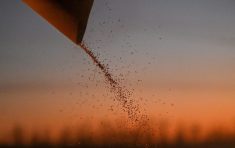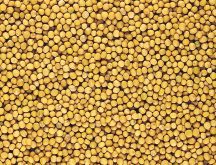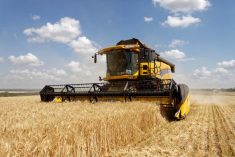CNS Canada — The 2018 mustard crop in Western Canada could hit half a million acres according to an industry expert, but he cautions that number could be much lower if dry soil conditions persist until spring.
In 2017, there were 385,000 acres of mustard seed planted in Western Canada, down from 525,000 acres in 2016.
According to Walter Dyck, an Alberta-based general manager with Olds Products, Canada will need more acres this year just to help it meet its normal export program.
“The big concern this year is that it’s dry,” he said. “With mustard sometimes the seeding decision is made depending on whether there’s moisture in the ground or in the top soil.”
Read Also

Alberta crop conditions improve: report
Varied precipitation and warm temperatures were generally beneficial for crop development across Alberta during the week ended July 8, according to the latest provincial crop report released July 11.
That’s especially true, he added, for those producers who grow mustard without a contract.
Some growers of other crops have expressed optimism a soon-to-be-signed Trans-Pacific Partnership trade deal could result in increased sales.
That likely won’t be the case with mustard, Dyck said. “Hardly any tonnage flows into those countries, maybe 10 to 15,000 tonnes.”
Poor crops in Ukraine and Russia have made a difference for Canadian mustard growers, he added. Both countries suffered frost damage and had relatively disappointing years. They are the primary shippers to major mustard-consuming nations such as France.
“That’s what’s keeping spot yellow mustard in the 40-cent area,” Dyck said. “The expectation is that they (Russia and Ukraine) will bump up their acres again in 2018 to cover off the demand in Western Europe.”
It’s a different situation for brown mustard, which is seeing spot prices trend as high as 45 cents/lb., he said.
One of the reasons is because supplies of brown mustard are dwindling in Western Canada and there are ideas the market could run out before the harvest of 2018.
For now, Dyck said, Prairie farmers can only wait to see how the soil moisture looks in the spring.
“That will determine whether we see that increase in acres.”
— Dave Sims writes for Commodity News Service Canada, a Glacier FarmMedia company specializing in grain and commodity market reporting.















